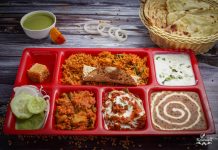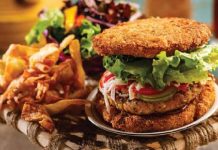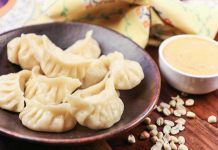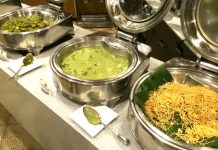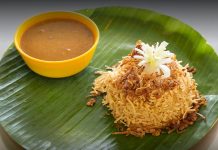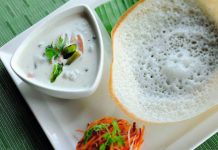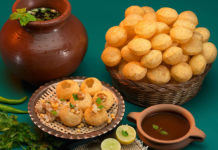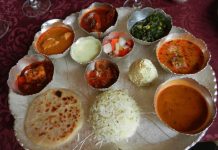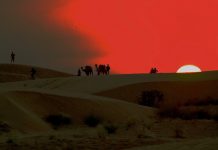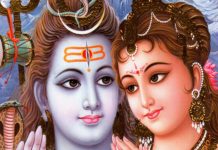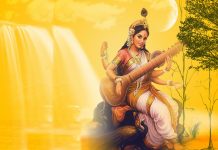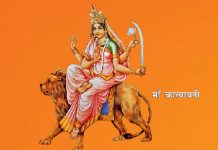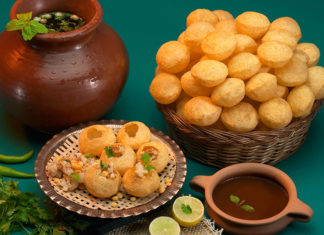4th day of Navratri holds great significance as it is the day the universe was created with divine blessings and smile of Maa Kushmanda. She offers health and prosperity through her blessings. Devi Kushmanda is among nine powerful forms of Maa Durga who is known as “Jagat Janani”- means mother of universe – and thus, we all are the children of Maa Durga. This day of Navratra is devotional in Indian Mythology.

Tithi: Chaturthi
Date: 4th October, 2016 (Tuesday)
Begin time (Muhurat): 12:34PM on 4th October, 2016 (Tuesday)
End time: 3:06 PM on 5th October, 2016 (Wednesday)
Colour of the day: Red
Goddess: Kushmanda
Meaning of Kushmanda
Meaning of Kushmanda can be understood by dividing each syllable and knowing the meaning of each – ‘Kush’ means ‘little’, ‘ushma’ means ‘energy’ and ‘anda’ means ‘cosmic egg’. Therefore, Kushmanda jointly stands for little energy that created universe giving it a shape of cosmic egg.
Puja and Offerings
As Devi Kushmanda is one of the powerful avatars of Goddess Durga, Adi-Shakti, Adi Swarup and Ashtabhuja Dhaari are some of her other names she is known as. The Puja for Goddess Kushmanda is performed in same way as on other Navratra days in the form of Kalash. Red flower and garland is offered. Sacred offering is must for Durga Puja and hence, for Maa Kushmanda, white pumpkin is offered. Worshipping Lord Shiva and Lord Brahma along with Goddess Kushmanda on this day is must.
Colour on 4th Day of Navratri
As Maa Kushmanda appears in red saree on this day riding her lion, the auspicious colour for the 4th day of Navratri is red. Surprisingly, colour for devotees is different. Auspicious colour for the people on Navratri Day 4 is Royal Blue. Decorate temple, Puja place and Goddess Durga with red. Offer red flower – preferably hibiscus.
Navratri Food on Day 4:
There are many things which the devotees who observe fast can intake on these nice days of navratre. Food is important because it pleases Goddess and also for devotes who observe fast should take something or the other at regular intervals so that they do not weak. Things that devotes can intake are
Singhara ka aata- with this particular aata you can make pakoras, halwa, paratha and poori.
Sama ke chawal ka aata – with this particular aata you can make dosa, poori, uttapam.
Kuttu ka atta-with the very famous and tasty aata you can make various things, which include khichdi, pori, halwa, paratha, pakoras.
Facts and Story Behind Durga Puja
Navratra, Durgotsav, and Akaal Bodhan are few other names of the original Durga Puja.
This nine-day festival starts on 7th day of Ashwin Shukla Paksh and ends on tenth day of Ashwina Shukla Paksh. Durga Puja originally is a festival of West Bengal is known as Durgotsava or Sharadotsav in Bengali. This is the annual festival of south Asia and is celebrated by worhshiping Goddess Durga and het different forms.
Durga Puja marks the victory of Goddess Durga over the evil demon buffalo Mahishasura. This is celebrated as the destroyer of evil and victory of goodness. Durga Puja also includes the worship of Lord Shiva who is an important aspect of Goddess Parvati (Adi-shakti), with Lakshmi, Saraswati and Ganesha and Kartikeya.
The Puja of Maa Durga is performed with plants called Kala Bou, and also includes banana tree which represents nine divine forms of Goddess Durga.
Chant for Maa Kushmanda
This chanting of Maa Kushmanda Mantra is very important while offering the prayer. Without a mantra puja is believed to remain partial. Devi Kushmanda protects her devotees from all the hurdles and difficulties. She gives lights to the darkness and harmonize the life in all possible ways. Articulate the mantra for Devi Kushmanda below to devote yourself to Maa Kushmanda.
Mantra –
ॐ देवी कूष्माण्डायै नमः॥
Om Devi Kushmandayai Namah॥
Prarthana –
सुरासम्पूर्ण कलशं रुधिराप्लुतमेव च।
दधाना हस्तपद्माभ्यां कूष्माण्डा शुभदास्तु मे॥
Surasampurna Kalasham Rudhiraplutameva Cha।
Dadhana Hastapadmabhyam Kushmanda Shubhadastu Me॥


